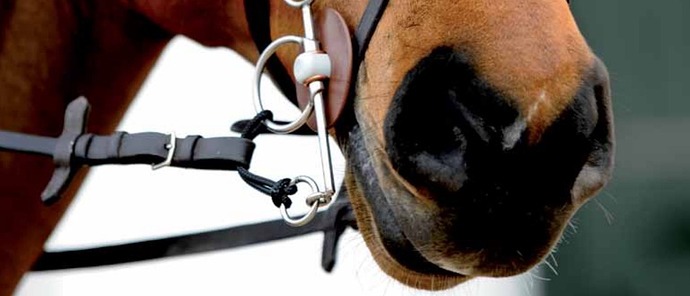Hoping for some bit recommendations for my horse. It seems I might be looking for a unicorn bit… I need something to encourage softness but I still need control as our current issue at the canter is that she will grab the bit and build, and in certain bits she will ignore a half-halt and I can’t get her back easily. She tends to canter with her mouth wide open if I use too much hand (physical causes ruled out) and the more I pull the more unhappy her mouth gets. Leverage bits make her curl behind the bit but they have been the most useful in preventing the building canter. She’s a big mare so she gets strong and sometimes heavy. I’m just a young amateur so I’m working on being soft with my own hand and not pulling on her face but sometimes I feel like if I don’t pull she’ll build to the point of a freight train. I do take lessons, but I currently don’t have a professional doing training rides consistently to help me. It’s pretty cold up north and she doesn’t get consistent turnout so she’s also a little fresh.
What we have tried:
-2 ring copper lozenge- Great, pretty respectful and doesn’t take over in it but she curls behind the bit.
-Waterford D ring- Gets a little strong and hard to get back. Not always enough.
-Peter Pletcher magic bit- It was great in the warmer months but now I get less respect from my half-halts and she will take the bit and build at the canter.
-Hackamore- She tends to lean on my hand in it, but currently not a bridle I’m comfortable using in the cold winter weather.
-Leather covered cheek elevator- She was pretty soft and nice in this the first ride but our other rides she started to get too light and hollow, and then became very offended by half-halts.
-Full cheek copper slow twist Dr. Bristol- Terrible. She was so strong, heavy, and I was unable to stop cantering.
-French link Pelham- It’s like she turns into a hot jumper. She just gets behind the bit and runs away.
-Rubber gag- It makes her carry her head and trick me into thinking she’s light. She’s not strong in it but she’s just avoiding working.
I know a bit isn’t going to be the magic fix to our problems, but I need to find something else to put in her mouth so we can have consistent and respectful rides while I work on my skills.
Thanks!

